Art Museums in Paris Part 1 of 3
I had a pretty busy summer. I had the good fortune to travel through France with my boyfriend for the better part of three weeks. We had been planning and saving up for the trip for two years, and the moment had finally come. The experience was amazing, enlightening, inspiring, difficult, stressful, full of wonder, joy, and just about a million other adjectives. So much happened while we were there. We studied so much. We learned so much. We drank great wines and ate great food. We saw so much amazing art. We also got engaged! It was truly a magical time!
We returned stateside at the very tale end of August and I have been struggling ever since on how to break down this trip for the Black Abbey Studios blog. While I am so excited to relate what I learned and discovered on the trip, it feels almost a daunting task where to begin and what to include. Every day was a historical boot camp. We didn't take things easy, and we love to learn. Each day was filled with walking tours, museums, historical sites, academic audio guides, research, photographs, the works. I feel I have enough information to write a whole book, let alone a blog entry.
So, I have had to ask myself what is most appropriate for an artist blog, and what is more appropriate for a travel blog? I debated this for quite some time. I thought about beginning a separate blog simply for our travels. Perhaps that is best, and I might persue doing so. However, there were moments of this trip that are directly tied to my work as an artist. I had revelations directly correlated to where I want to go with my own art endeavors. So much of the art I saw inspired me and continues to inspire me in my everyday routines. So I have decided to break down this blog into three parts that focus strictly on the art museums we visited. There was plenty of art, history, and literature related adventures we had along the way. Just about everything in Paris could be considered some sort of artwork. But I'll focus on the art museums here. If there is an interest in a separate travel blog, let me know. Perhaps I should start one!
For the purposes of this posts, I am going to focus on three museums; L'Orangerie, the Louvre, and my favorite, the D'Orsay. I'll start with the L'Orangerie, which was our first.
We visited these museums pretty much back to back to back, taking a day in between for a day trip from Paris out to Versailles. In retrospect, it wasn't the best course of action. I recommend a breather day in between to rest and regroup. Many of the museums in Paris are huge, and many hours are spent on your feet trying to take it all in. Versailles is almost its own planet, and could take days to explore it all. Because we were on such a fixed timeline, we had no choice but to go at this boot camp style, and so we did! We wanted to ensure we saw as much as possible, and each of these museums are a must visit in their own way. Nothing could be cut from our list.
We began our adventure at the Musee de l'Orangerie, which is located in the Tuileries Gardens, next to the Place de la Concord in Paris. This is one of the somewhat smaller museums, and I think most casual fans can get through it in a couple of hours. However, we took our time. I am glad we did, as this museum, known for Monet's Nympheas, or Water Lillies, also houses several works from Cezanne, Soutine, Utrillo, Picasso, Matisse, and more. We were also lucky to catch a traveling exhibit containing even more impressionist works from around the world.
We began with the Nympheas, which are now located in two oval rooms on the upper floor. Restored in 2006, these impressive pieces took my breath away. As i entered the first room, the hairs on my arms stood up on end, and my heart froze for a moment. I had seen photos of these rooms before going to the museum, and so I knew that these paintings were large. But nothing quite prepared me for seeing the Water Lillies on this scale in person. I instantly teared up. In these rounded rooms you are literally surrounded by Monet's colors and interpretations of the light on the water. These deep blues, creamy purples, and serene greens against the crisp white walls in rooms filled with natural light were so peaceful, so calming, and so inspiring.
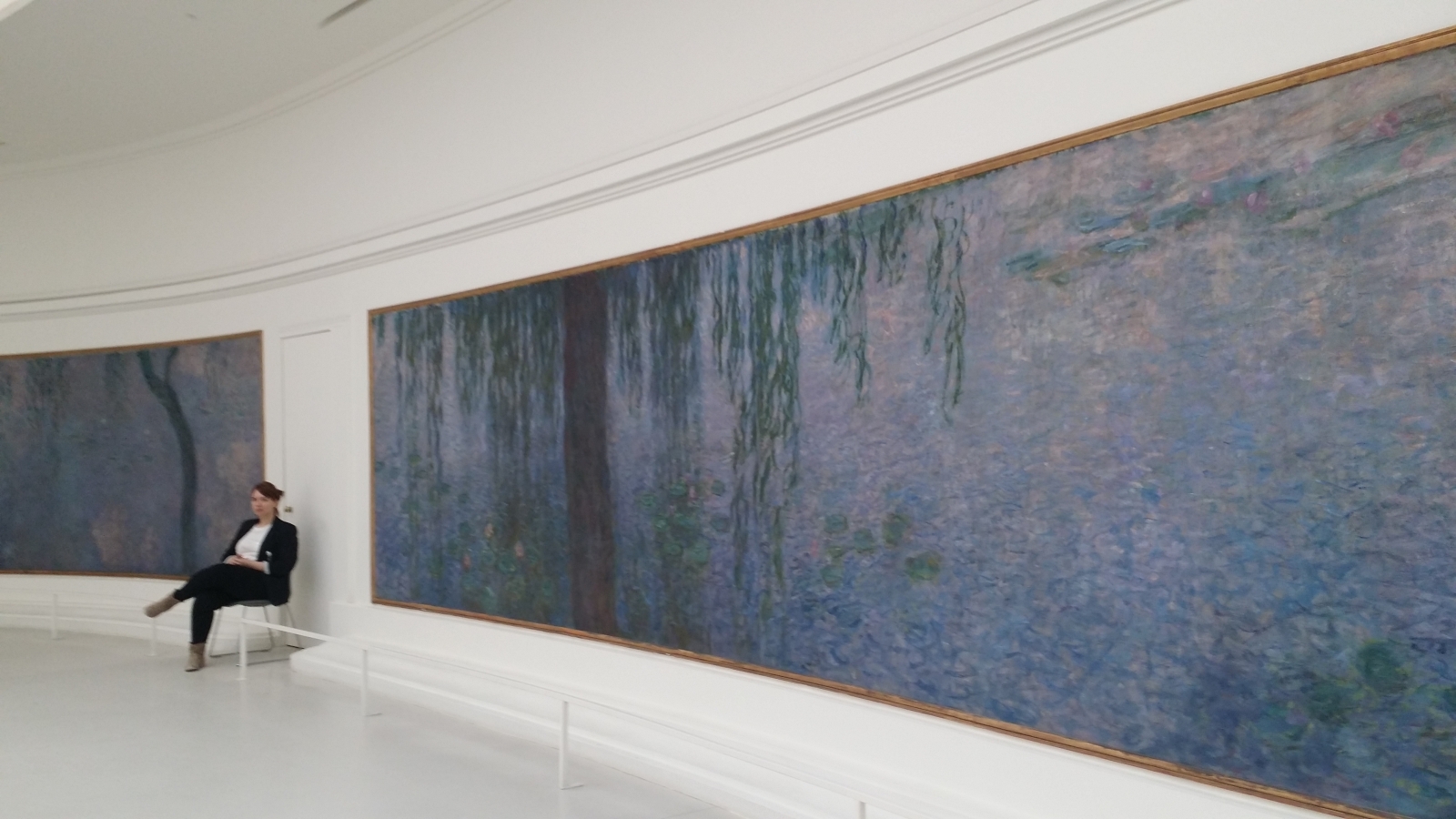
It only takes a few moments to view paintings so large. But again, we really took out time in these rooms. I studied the brush strokes from close up and from across this gallery. Seeing work on this scale really helped open my mind to approaching painting different subjects at different scales. I can be myopic in my own art, and I sweat the details too much sometimes. Viewing the lillies up close, then seeing them from far back and what role they play in the overall composition had an impact on me.
.jpg)
These Monet's made me happy. I was content and at peace staring at them. I know I'm fond of black, and shadows, and most things dark and macabre. But these pastoral, peaceful scenes bring out something else in me. The truth is I really DO love color. I just don't like to wear it very often! ;)
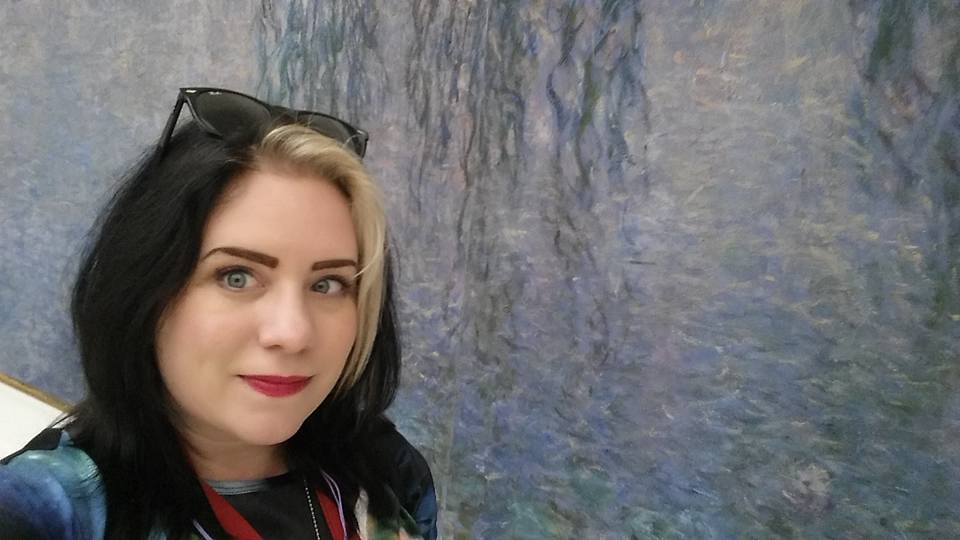
I also have a big soft spot for Monet. If you asked me what my favorite art periods are, I would answer Pre-Raphaelite, Renaissance, a little Art Nouveau. But I started studying art history with Monet. I was in high school and wanted to start studying art. I didn't know where to start, and I didn't know anything about art periods or movements. I went to the library and checked out a giant stack of books on Monet. I found him so accessible. His paintings are easy to look at and understand. There is not a lot of interpretation needed to appreciate a Monet. You don't need a history degree or to crack some secret code to understand what is going on. Its nature and light. And therefore he was a great "gateway" drug to get me interested and to continue learning. I will always have a love for Monet because of that, and how I started down this path, even when it took me a while to find my way.
From the Nypheas galleries we went back downstairs to explore the rest of the museum. There are way more pieces I admired in the l'Orangerie than I can possibly post here. What struck me most about this collection was the paintings featured were mostly the private collection of Paul Guillaume, a major modern art collector and dealer in the late 19th and early 20th century. These may not be the most famous works by the artists, but they give you a richer understanding of each one of them and the period. We saw many Cezannes, Picassos you don't normally see on fridge magnets and in magazines, lesser known Renoirs and works by Matisse. Geoff and I both really enjoyed seeing these lesser known works, many of which are just as amazing as the greater known ones.
A highlight for us was discovering an artist we were both unfamiliar with. We were really captivated by the works of Chaim Soutine. For those unfamiliar (as we were), Soutine was a Russian-French painter of Jewish origin. His works have an very unique style, which is somewhere in between traditional painting, impressionism, and modern abstract. I was captivated by his shapes and colors, his bright white highlights, and his exaggerated style of painting. They were fun. Fun to look at, and fun to trace all the curved lines up and down with one's eye.
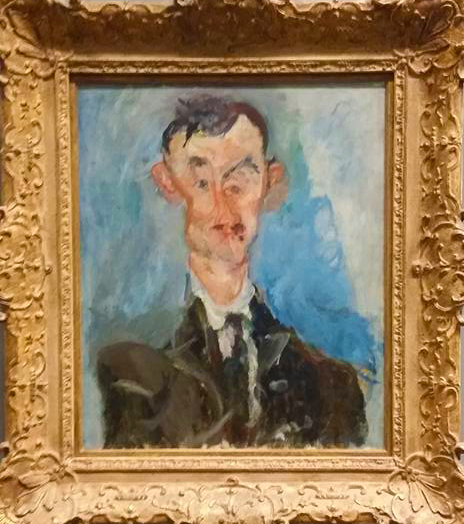
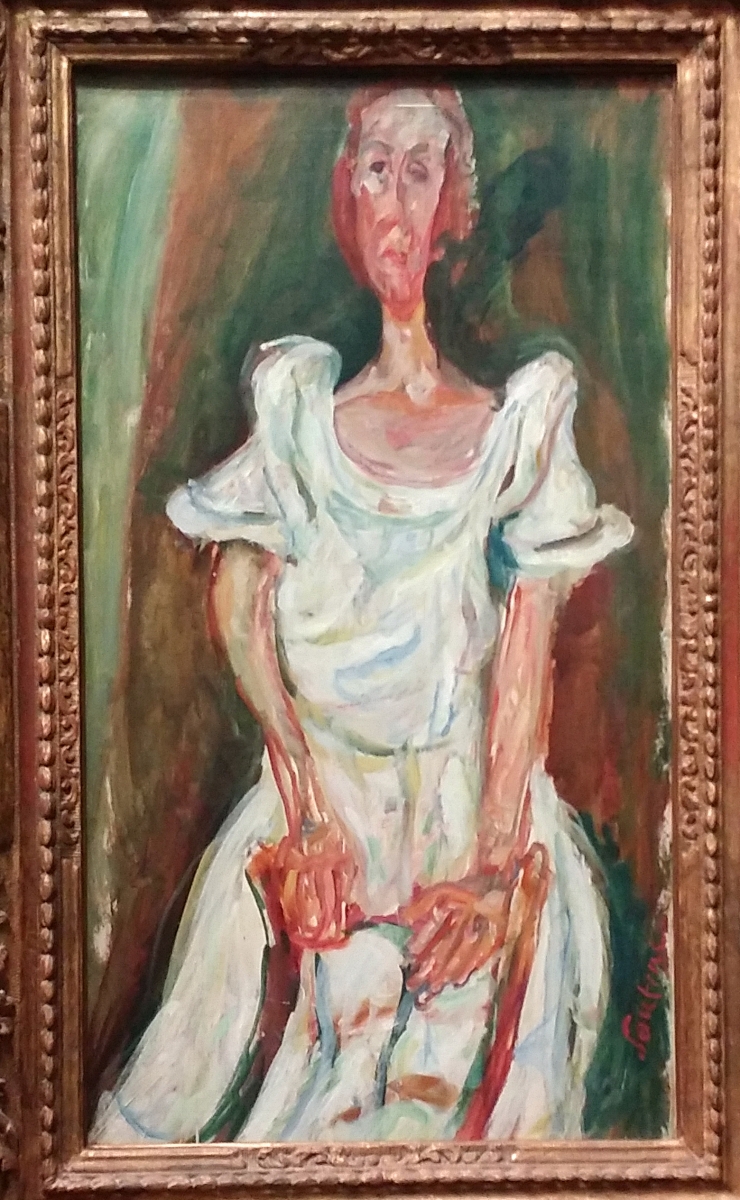
Two of the works that really stood out to me were his Portrait of a Friend, and the Fiancee, both painted in the early 20s. (pictured above) But my favorite of his, and honestly one of my favorites in the whole museum, was his Poulet, pictured here:
.jpg)
I wish I could explain what it is i really love about this piece. I love the color and shape. I love that its a bit dark and macabre. Maybe its also a little bit because, after trouncing around France for a few days, looking at all of this grand architecture, beautiful statues, and magnificent landscapes, a painting of a dead chicken tends to stand out as....well, odd! Plus, I think the story of Soutine painting this, and other works like it is funny. He would go to the butchers and buy these carcasses, then hang them in his studio for days and weeks on end to paint. His neighbors would call the police and complain that he must be dead in there, the stench was so appauling. I think that's dedication, and pretty hardcore if you ask me. Artists are committed if nothing else! And they don't always make the best neighbors!
I also felt sadness and empathy toward Soutine. As a jew in Paris, he was forced to flee during the occupation. While hiding in and around areas of France, we suffered and ulcer that killed him before he could seek adequate treatment. Yet another brilliant and talented soul lost to the horrors of war and hate.
We ended out tour through the museum with a traveling exhibition. This included more works by the impressionists, and abstract artists from as far as Japan. It was interesting to learn how the art dealers and advocates of this period helped spread the new movement to the far reaches of the world. At the very end of the exhibition, I ran into this piece, another "old friend" from back in my teen years:
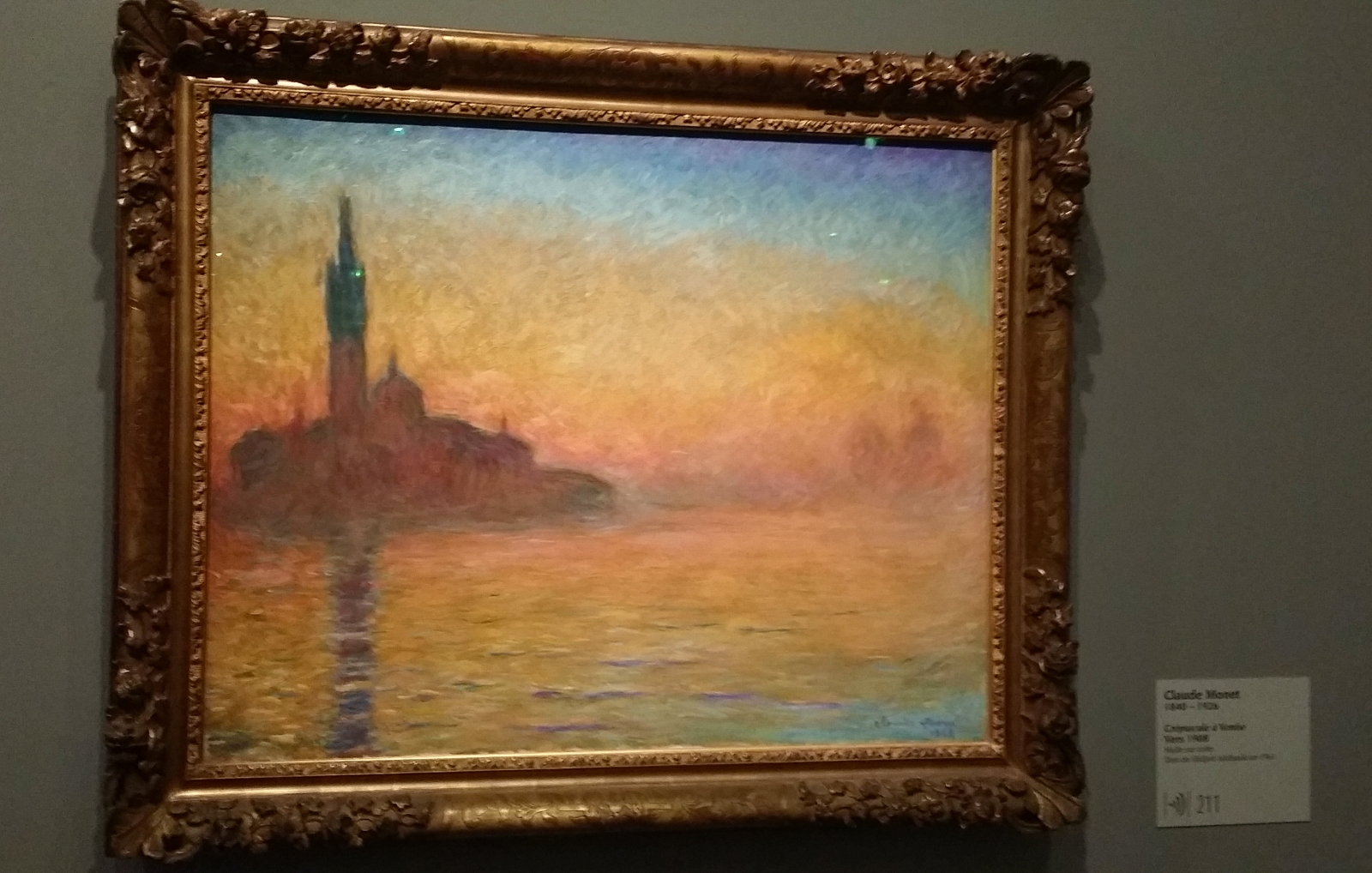
Monet's Twighlight in Venice is one of my personal favorites of his. It is not usually housed in the l'Orangerie, and so I was excited to see it here on tour. I must have spent hours as a teenager staring at this piece, in the form of calendar covers, desktop backgrounds, and in art books. I've just always loved it. The color harmony here is just so beautiful, and the texture is so rich and plentiful. I don't play with texture at all in my work, and seeing some of the impressionists on this trip to France has made me think about doing so.
Geoff and I left the museum and began to discuss how different the works were than we are used to seeing on our vacations. Through our travels to Germany, Austria, and Italy, we are used to studying much older works, commissioned by emperors, popes, and churches. While we both love the work of the renassiance, the impressionists on this trip felt like such a breath of fresh air. It was exciting to be seeing something different, from the very masters of the movement. Pleasant discoveries like finding Soutine along the way made it that much more fun. This excitement would shape our next visit, to the Louvre, and then finally jump to light speed at the D'Orsay. More on our next Paris museum adventure in part two.
Thanks for reading!
Tags
- Art (4)
- Art History (1)
- art nouveau (1)
- art prints (1)
- art work (1)
- Artist (1)
- autumn (1)
- best friend goals (1)
- Black Abbey Studios (1)
- Connection (1)
- D'Orsay (1)
- diy (1)
- frame (1)
- framing (1)
- France (1)
- goth wedding (1)
- gothic wedding (1)
- Halloween (1)
- Hearts (1)
- Impressionism (1)
- L'Orangerie (1)
- Louvre (1)
- Music (1)
- Orlando Artist (1)
- Painting (1)
- Paris (1)
- picture framing (1)
- Romanticism (1)
- shop interior design (1)
- Soul (1)
- wedding (1)
- witch (1)
Archives
- April 2023 (1)
- November 2020 (1)
- August 2020 (1)
- January 2020 (2)
- November 2019 (1)
- July 2019 (1)
- May 2019 (1)
- January 2019 (2)
- July 2018 (1)
- March 2018 (1)




